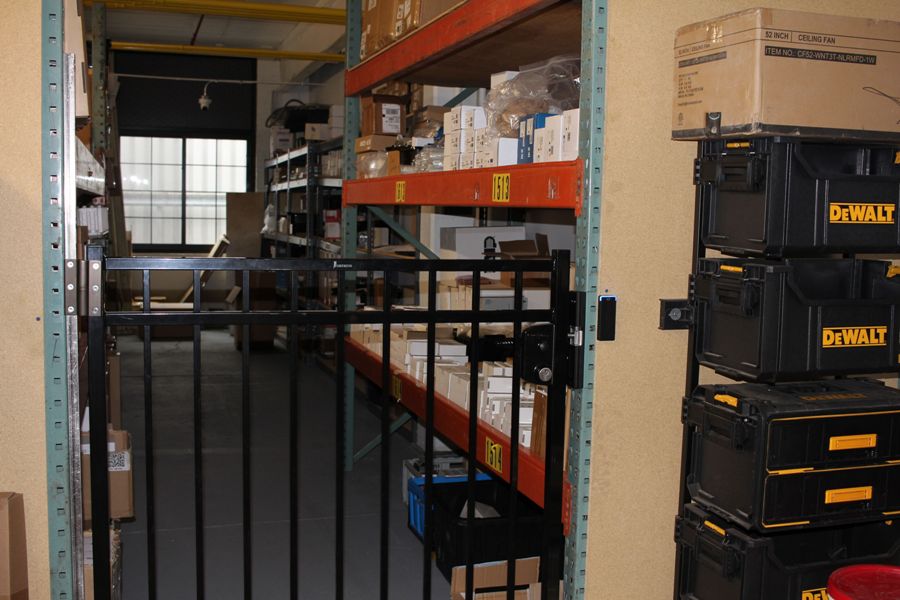Video MGMT System
 Access Control
Access Control
Voice & Data Wiring
 Burglar Alarm
Burglar Alarm
 Fire Alarm
Fire Alarm
Video MGMT System
Voice & Data Wiring
In the modern world, wireless technology like Radio Frequency Identification (RFID) and Near Field Communication (NFC) have become integral to numerous applications, transforming everything from inventory management to secure communication.
This article aims to provide a deep dive into RFID and NFC devices, offering insights to those considering their implementation.
RFID—short for Radio Frequency Identification—is a wireless technology that uses radio waves to transmit unique data for identity authentication.

Central to RFID systems are RFID tags, small wireless devices in objects like key cards, and fobs that use tiny antennas to transmit identifying information to RFID readers.
RFID devices come in two types: active RFID tags, with their own power source, and passive RFID tags, which draw power from a reader's electromagnetic field.
NFC, or Near Field Communication, is a subset of high-frequency (HF) RFID technology that enables short-range communication between NFC devices.
NFC tags are more secure for access control and financial transaction purposes than RFID tags. They are most commonly used in NFC-enabled smartphones and other consumer devices for seamless data transfer and contactless payment.
RFID tags can operate across a wide range of frequency bands, including low-frequency (LF), high-frequency (HF), and ultra-high-frequency ranges (UHF).
HF RFID uses the same frequency range used by NFC - around 13.56 MHz.
RFID technology, particularly when utilizing active RFID tags, can communicate over considerable distances – even hundreds of meters.
Conversely, NFC, due to its design for secure, contactless transactions and enhanced access control security, works only over short distances, typically less than 4cm.
This short read range limitation inherently makes NFC a more secure means of data transfer.
While data transfer rates can vary based on the specific RFID system or NFC devices in use, NFCs usually transfer data at a slower rate than RFID tags. This is due to NFC's focus on secure communication, which necessitates a slower transfer speed.
Active RFID tags have their own power source and can communicate over greater distances. Passive RFID tags, on the other hand, leverage power from the RFID reader's radio waves. NFC tags function similarly to passive tags, drawing power from the active NFC device they're communicating with.

RFID technology excels in applications like supply chain management, asset tracking, and security access control.
The ability of RFID tags to hold significant amounts of data allows for detailed tracking of goods in supply chains, improving inventory management. Furthermore, RFID's long-range capabilities make it ideal for doing asset location tracking in large areas.
NFC shines in applications that require secure, short-range interactions.
NFCs are most commonly used in contactless payments, where an NFC-enabled smartphone can communicate with a payment terminal to complete a transaction.
NFC is also integral to the IoT ecosystem, enabling smart devices to interact seamlessly.
While RFID technology offers numerous benefits, potential vulnerabilities exist, primarily around unauthorized access or eavesdropping. To mitigate these, various security measures can be implemented, including data encryption and shielding techniques.
NFC’s short-range communication offers inherent security advantages, as potential eavesdroppers would need to be in close proximity to intercept data. NFCs can benefit from enhanced secure communication protocols, such as data encryption.
Choosing between RFID and NFC depends on a multitude of factors, primarily revolving around the intended application. Considerations include the required range of communication, data transfer speed, power requirements, and the level of security necessary.

In essence, both RFID and NFC are powerful wireless technologies, each with its unique strengths and suited applications. Understanding their key differences in operating frequencies, communication range, data transfer speed, and power requirements will help you to make the right decisions for your specific needs.
Fill out the simple form at the bottom of this page for assistance from the security experts at Mammoth Security. We'll quickly reach out to schedule a free site survey and security consultation with a friendly and knowledgeable member of our team.
NOT COMPLETELY SURE?
860-748-4292There is no one-size-fits-all answer. The choice between RFID and NFC depends on your specific needs and use case. RFID is ideal for long-range applications, like inventory tracking and asset management, while NFC excels in short-range, secure transactions such as contactless payment and enhanced access control.
NFC technology is a subset of RFID technology and operates on the same frequency as HF RFID. Therefore, an NFC device can read HF RFID tags. However, it cannot read LF or UHF RFID tags.
The main differences lie in their communication range, data transfer speed, operating frequencies, and power requirements. RFID can operate over long distances and at varying frequencies, while NFC is designed for short-range communication at a specific operating frequency.
Both RFID and NFC have potential security vulnerabilities. However, measures like data encryption and secure communication protocols can significantly enhance their security.
RFID is extensively used for access control in all industries, as well as for logistics and inventory management in industries like retail and logistics. NFC devices are popular in the consumer electronics industry for applications like contactless payments and device pairing.
Key factors include the intended application, required range, data transfer speed, security needs, and power requirements.
RFID and NFC continue to evolve, with trends leaning towards greater integration with improved security measures, IoT devices, and advancements in tag technology, potentially extending their range and capabilities.